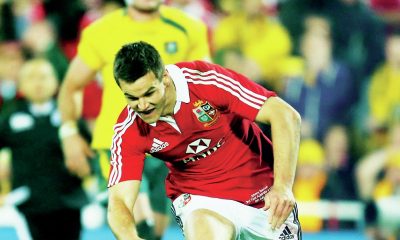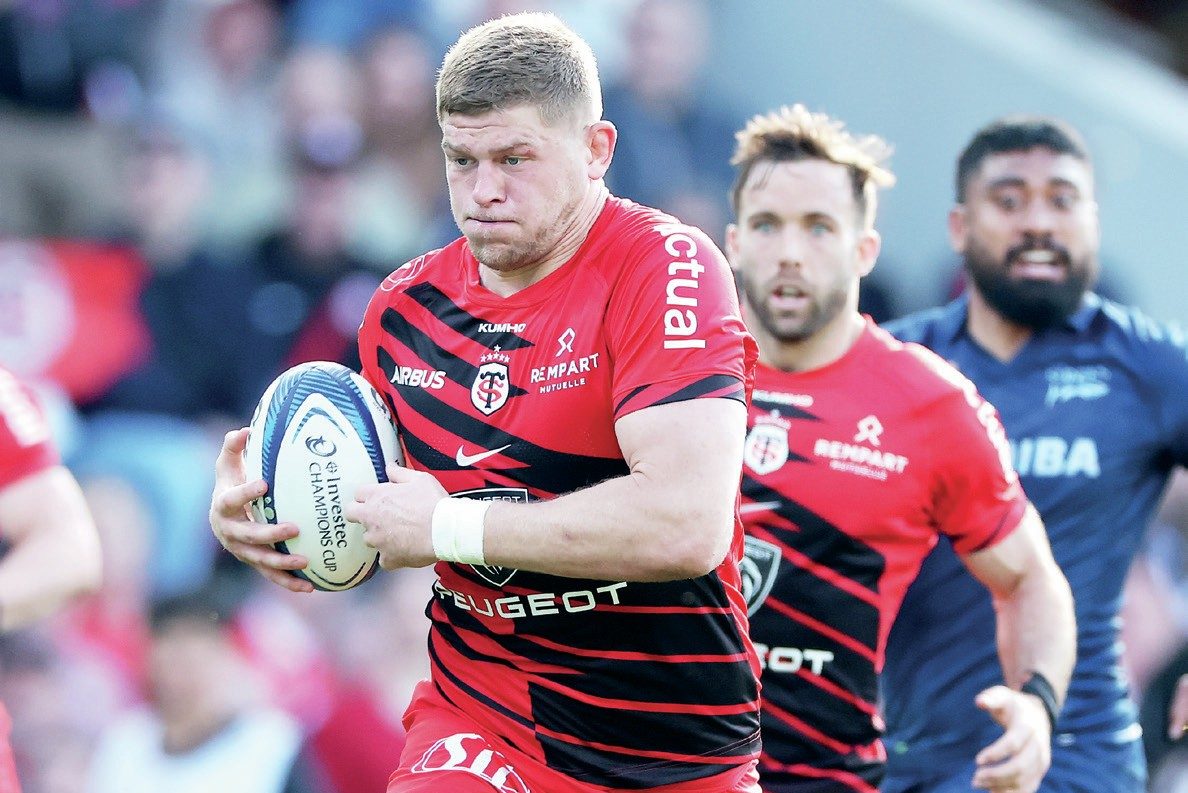
 A fit Jamie Roberts is very important to Wales in a specific way. The power of his carrying gets the Welsh over the gain-line and delivers good attacking ball very quickly. Quality and speed of ball is almost guaranteed, and that is gold dust to any side, especially going into a game against England of this importance.
A fit Jamie Roberts is very important to Wales in a specific way. The power of his carrying gets the Welsh over the gain-line and delivers good attacking ball very quickly. Quality and speed of ball is almost guaranteed, and that is gold dust to any side, especially going into a game against England of this importance.
The classic way that Wales bring Roberts into the game is by throwing to the back of the lineout. He takes great lines, and whether the pass comes directly from the scrum-half, or from the No 10, he runs strongly at the opposition line between their fly-half and inside-centre channels.
At 6ft 4ins and over 17 stone, and relatively quick with it, Roberts is very difficult to stop. He usually breaks through the first line of defence, drawing in not only two midfield tacklers but also the opposition No.7. The throw to the back has usually drawn the openside in, and, because he’s chasing back, while he might get an arm in, he’s unlikely to be able to stop Roberts setting up the ruck or off-loading.
Just how effective this can be was illustrated in the French game when Roberts ran through the tackle of Jules Plisson, rode a left arm hit from Mathieu Bastareaud and a Wenceslas Lauret attempt to scrag him, before giving Sam Warburton a try-scoring pass.
If the ball goes to the back, then England have to be smart. Not much changes with Wales, and usually a throw to the back is destined for Roberts. However, it could also give the scrum-half a chance to go, or Rhys Priestland at fly-half, or the blindside wing – so, England’s defence will have to be on its toes.
However, if it does go to Roberts the key for England is that Owen Farrell and Billy Twelvetrees must be in line and go up together. You know when the ball gets into Roberts’ hands that he will not initially be looking to pass it. His aim is to get past the first line of defence, knocking people out of the way in order to set Wales up. In that respect he is the opposite to Twelvetrees, who is mainly a distributor with a kicking game.
We do not know yet whether Jonathan Davies will play alongside him, but the best partnership Roberts has formed was when he linked so well with Brian O’Driscoll on the 2009 Lions tour. Roberts returned from that tour as the man of the series, and he has a well-deserved reputation because he is so hard to knock down.
He does not link quite like that with Davies, who seems to make his own breaks, but the Welsh centre pairing works well, especially in defence.
The most significant link for Roberts is that between him and fly-half Priestland. In the 2011 World Cup they had a good 10-12 understanding, and, at his best, the timing of Priestland’s pass gave Roberts time to launch himself to devastating effect. If Roberts is running at a lick at any fly-half in the Six Nations it is an unfair contest which he will capitalise on every time.
Against Ireland he was still doing his job well even when the rest of the pattern didn’t work because of the huge Welsh error count. In that game he carried ten times and made 18 metres, notably when he stepped out of O’Driscoll’s tackle early in the second half, while against France he carried eight times with the biggest gain 15 metres when he set up the Warburton try.
However, for a man of his size and power you would think he would make big hits and win turnover ball in defence, but that aspect of his game does not appear as developed. If he added that asset Wales would be even more potent.
Defending against Roberts is all about anticipation. In midfield defence you have a split-second in which to make the right calls – but the brain is a fantastic computer and Farrell and Twelvetrees will have to read whether Roberts is facing in or out, if his shoulder is turned, indicating he is heading their way.
The chances of Roberts passing are minimal, and you have to work as a unit, and be alert and disciplined. Wales will know that Farrell is strong in defence and that Twelvetrees is fairly solid, but also that they have not really been strongly tested – and that you only have to miss one tackle.
Farrell tends to go high, because bigger players tend to do that, while faster players tend to go low. Having played with Roberts for the Lions, and against him for England, Farrell knows what is coming, and I expect he and Twelvetrees to work as a team with the fly-half going higher and the inside-centre going lower.
England do not have the best defensive record in this tournament, but it is all about execution on the day. I expect Chris Robshaw to join Farrell and Twelvetrees as part of a trio targeting Roberts, and they must be tight and confrontational. You want all three on the big Welsh 12, and their aim must be: Hit him. Stop him. Send him backwards.
Wales will not attack solely through Roberts, but he is an important part of the way they play. It will be a big mental battle won if they stop Jamie Roberts getting over the gain line.
If successful, it disrupts the Welsh pattern and asks them to be more creative – which, so far, they haven’t been.


British and Irish Lions
From Leicester reject to a British and Irish Lion: Tommy Freeman’s stellar rise

Latest News
Steve Diamond: Franchise league a good idea

Latest News
Touring Japan is my goal says Edwards























You must be logged in to post a comment Login